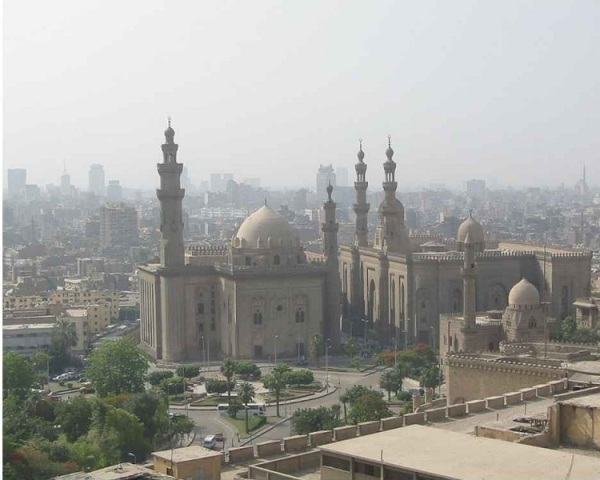Cairo Citadel is an impressive fortification in the capital city of Egypt. Let us check out some fun & interesting facts about Cairo Citadel.
Facts About Cairo Citadel
Cairo Citadel, as the name suggests, is a magnificent fortress in the Cairo city of Egypt. It was constructed under the aegis of Salah ad-Din - an Abbasid Ruler, between 1176 and 1183. It is said that the healthy air that surrounded the citadel was the main reasons why Salah ad-Din chose it as the site for his bastion. As per the local legends, he hung pieces of meat at various sites throughout Cairo, including the one at which Cairo Citadel now stands. With the exception of the site of the citadel, the meat got spoilt at all the places within a day. At the citadel area, it remained fresh for several days. Cairo Citadel was later built at the same site. Today, the Citadel is a prime tourist location and is a preserved historical site. The citadel also houses a very important landmark of Egypt—the Mosque of Muhammad Ali or ‘Mohamed Ali Pasha’. If you are looking for more facts like these, let us explore some fun and interesting facts about Cairo Citadel.

Image: Vyacheslav Argenberg@flickr
Fast Facts
Location: Cairo, Egypt
Built in: 1176-1183 CE
Built by: Salah ad-Din
Dynasty: Ayyubid
.
Fun & Interesting Facts About Cairo Citadel
- Cairo Citadel is sometimes referred to as 'Mohamed Ali Citadel', since it contains the Mosque of Mohamed Ali. It was built in memory of Tusun Pasha - Muhammad Ali's oldest son, who died in 1816.
- The mosque of Mohamed Ali stands perched on the summit of the citadel and was built between 1828 and 1848.
- The Cairo Citadel was built in the Ayyubid Dynasty.
- Cairo Citadel served as Egypt's seat of government till the 1860s, when Khedive Ismail - Egypt's ruler, moved to the Abdin Palace, in Ismailiya neighborhood.
- Apart from mosque of Mohamed Ali, there are two other mosques at the citadel. They are - Mosque of Al-Nasir Muhammad, from the early Bahri Mamluk period, and the 16th century Mosque of Suleiman Pasha, amongst the first Ottoman-style mosques in the citadel.
- The Bir Yusuf, also known as Salah ad-Din’s well, was dug in order to supply the occupants of the fortress with a continuous supply of fresh, inexhaustible water. The well was 285 ft. deep.
- Ever since the citadel was built, it was never without a military garrison, especially after the Crusaders invaded. Even to this date, ruins of the garrison can be seen at the citadel.
- Al-Gawhara Palace, the National Military Museum and the Police Museum are some of the buildings housed inside Cairo Citadel.
- The citadel is one of the ‘greatest monuments of medieval warfare’ in the whole world.
- The Cairo Citadel went through six major reconstructions from the 19th century.
- Cairo Citadel was fortified as a protection against attacks by the Crusaders.
- The citadel has been built as per Ayyubid, Mamluk and Ottoman styles of architecture. In fact, the mosque of Suleiman Pasha, is the first of the citadel’s Ottoman-styled mosques.
- Cairo Citadel was constructed by a lieutenant of the Ayyubid ruler Salah al-Din, between 1176 and 1183. It was later enlarged, in 13th-14th century.
- Initially, the citadel was intended to serve as a royal residence and military barracks.
- From the thirteenth to the nineteenth centuries, Cairo Citadel served under Ayyubid, Mamluk, Ottoman, and Khedival rulers of Egypt.
- Today, the citadel is mostly in ruins and mainly comprises of part of the walls and Bir Yusuf, the well that supplied it with water.
- After the death of Al-Kamil’s father, Sultan al-Kamil moved his residence to the citadel and constructed the Abdeen Palace, which later became the seat of the control in Egypt.
- The citadel is one of the most popular non-pharaonic monuments in Egypt.
- One of the rulers, An-Nasir Muhammad, tore down most of the enclosures and buildings in the citadel, during his rule, and replaced them with many considerable buildings from his own time, such as the An-Nasir Muhammad Mosque.
See also
More from iloveindia.com
- Home Remedies | Ayurveda | Vastu | Yoga | Feng Shui | Tattoos | Fitness | Garden | Nutrition | Parenting | Bikes | Cars | Baby Care | Indian Weddings | Festivals | Party ideas | Horoscope 2015 | Pets | Finance | Figures of Speech | Hotels in India : Delhi | Hyderabad | Chennai | Mumbai | Kolkata | Bangalore | Ahmedabad | Jaipur
- Contact Us Careers Disclaimer Privacy Policy Advertise With Us Lifestyle Sitemap Copyright iloveindia.com. All Rights Reserved.







